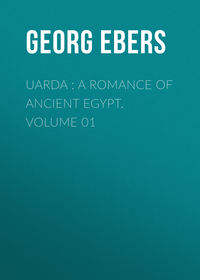Kitabı oku: «Uarda : a Romance of Ancient Egypt. Volume 01»
Bir şeyler ters gitti, lütfen daha sonra tekrar deneyin
Türler ve etiketler
Yaş sınırı:
0+Litres'teki yayın tarihi:
01 temmuz 2019Hacim:
70 s. 1 illüstrasyonTercüman:
Telif hakkı:
Public Domain